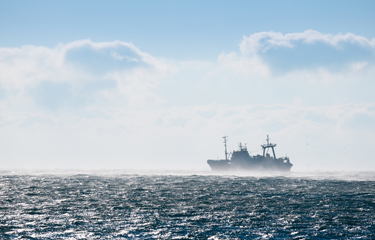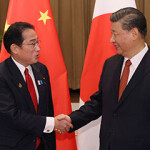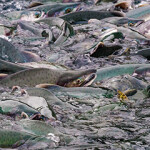Negotiations halfway complete on UN high seas treaty, with far-reaching impacts for seafood industry

Time is running out for the fishing and seafood industries to weigh in on a United Nations treaty that will govern fishing and other activities on the high seas.
The treaty is being developed as part of the United Nations Convention on the Law of the Sea and is formally known as the Biodiversity Beyond National Jurisdiction (BBNJ) Agreement. It could raise costs for fishermen by adding administrative and reporting requirements for those who fish outside of countries’ national waters.
Several key provisions in the treaty would also affect where and how vessels fish on the high seas by setting up mechanisms to create area-based management tools, such as marine protected areas, and outlining when and where environmental impact assessments must be completed.
Negotiators from more than 200 countries have completed two of four negotiating sessions so far – the first in September last year and the second in March and April of this year. A third round will run from 19 to 30 August at the U.N. headquarters in New York, with a fourth and final round in early 2020. The draft text of the treaty was released earlier this summer.
So far, the fishing and seafood industries have not contributed substantially to the treaty negotiation process, according to Paul Holthus, founder and president of the World Ocean Council, a business alliance that advances corporate responsibility in regard to the oceans.
“The treaty development is thus moving forward steadily to realizing a legally binding agreement that significantly revises the ‘freedom of the seas’ concept that has defined human involvement in the high seas for centuries,” Holthus told SeafoodSource. “There is not much time left in the process for the fisheries, seafood, and other ocean industries to provide their input.”
The World Ocean Council has been the only ocean business organization that has consistently engaged in the treaty process during the last decade, Holthus said, adding that the council will continue to provide input on the negotiation of the treaty text.
The draft treaty’s current requirements for environmental impact assessments are far-reaching, Holthus said. They outline which activities do and don’t require an assessment, who makes determinations on if an activity is allowed to proceed, and how results of an assessment can be challenged.
The environmental impacts considered go beyond a specific site or activity and include considerations of cumulative and transboundary effects, such as impacts that cross from national waters into international waters, Holthus said. The draft treaty text also allows for more stringent assessment requirements in areas that are designated ecologically or biologically significant.
Negotiators have debated which U.N. agency should administer the treaty, or whether a new body should be established, Holthus said. Aspects of monitoring and verifying are still being discussed, along with details related to which areas and activities will require an environmental impact assessment. Certain contentious issues may not be fully resolved in the treaty itself, which would then contain a broad outline and process for sorting out details later.
“It is important to remember that this will be a legally binding instrument under the Law of the Sea, effectively the most encompassing ocean regulation since the Law of the Sea itself was adopted,” Holthus said. “The fishing and seafood industry should thus be concerned that they have not provided a lot of input to the drafting of the treaty thus far.”
Currently, human activity on the high seas is managed by a patchwork of international bodies and treaties that vary greatly in their mandate, scope and objective. During the negotiations, disagreements have arisen over how the new treaty will mesh with those other bodies, according to Liz Karan, who heads the treaty delegation for The Pew Charitable Trusts, which is acting as an official NGO observer.
Various regional fisheries management organizations have made interventions or participated in side events, Karan said, while representatives from domestic fishing industries and interests have participated in government stakeholder consultations in the U.S. and elsewhere.
Discussion of how to manage the high seas has been ongoing at the U.N. for more than a decade, even though formal negotiations started just last year and are now halfway complete.
“There have been some tense moments during that period, but the current tenor of the negotiations is collegial with an eye towards achieving a practicable agreement,” Karan told SeafoodSource. “There also seems to be an increased momentum to successfully finalize the treaty text in 2020, based in part on the growing public attention and awareness that the health of our global ocean is declining.”
Photo courtesy of Yarygin/Shutterstock






Share